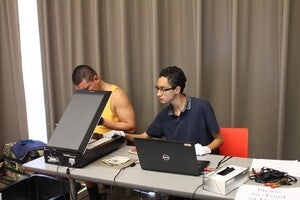Growing up queer for me was, as it is for many others, an intensely lonely experience. Being in the closet left me isolated from the friends and family to whom I was meant to be closest; the shame of hiding a secret and the fear of losing those relationships by revealing myself prevented these relationships from reaching a place of true security and trust, and as a result left me with little deep connections. Being Mexican-American only pushed this loneliness further, as I was distanced from my own culture -- a culture of intense machismo and masculinity -- by my own femininity. Coming out of the closet did little to alleviate this loneliness. Although I was blessed with an accepting and compassionate family, my distance from the hyper-masculine culture of my own family was irreversible.
For many years, I remained unaware of a thriving queer culture and history that was far more compatible with my personality; for too long, queer people have been erased from history, at best, or been demonized by educators and historians, at worst. Despite working for the ASU Libraries, I did not become acquainted with the work of special collections until I found the Arizona LGBT History Project -- a collaboration between the ASU Libraries and Phoenix Pride, the largest LGBT organization in the state. Immediately, I was captivated by the project. I had the luck of studying queer history in college, but I knew that many did not have the same opportunities. I could only imagine how I might have been affected -- how much loneliness and disconnection I might have been spared -- if I had known about such a project in my own youth. But thanks to the work of the A
Yet, what is history without the people that participate in it? More than anything, it was the accompanying archival evidence -- of fliers, photographs, and periodicals, that made that history come alive for me. These materials were a testament to the presence of queer people throughout history, evidence of a strong culture, and evidence of a people willing and able to carve out a better future from themselves. My work here with special collections digitizing the BJ Bud Memorial Archives has enabled me to take part in this tradition. I spend most of my days analyzing and digitizing images of gay life in Arizona in past decades. These photographs include typical bar nights, Halloween parties, gay rodeos, birthday parties, and many other events. In these images, the history of queer people comes to life. So often, we view queer history as nothing more than a political story of oppression, struggle, and resistance. While this is certainly an integral and important part of queer history, queer history goes beyond these grand tragedies and triumphs. For many queer individuals, life was about having a drink with a friend after work, or watching the joy on a friend’s face as they blow out their birthday candles. It is in these surprisingly common, and all too human moments, that the real soul of queer culture reveals itself -- loving life, and all the little joys that come with it.
